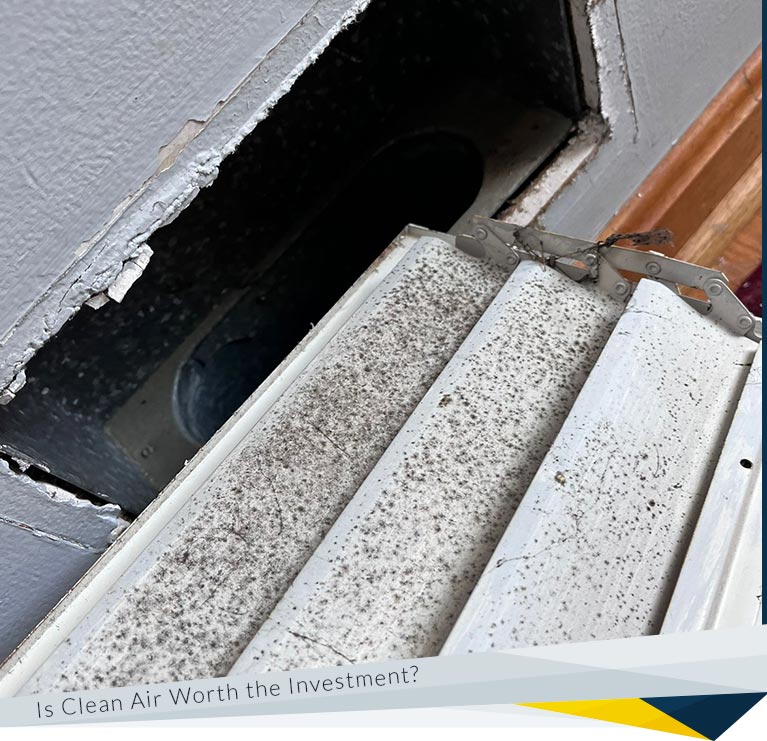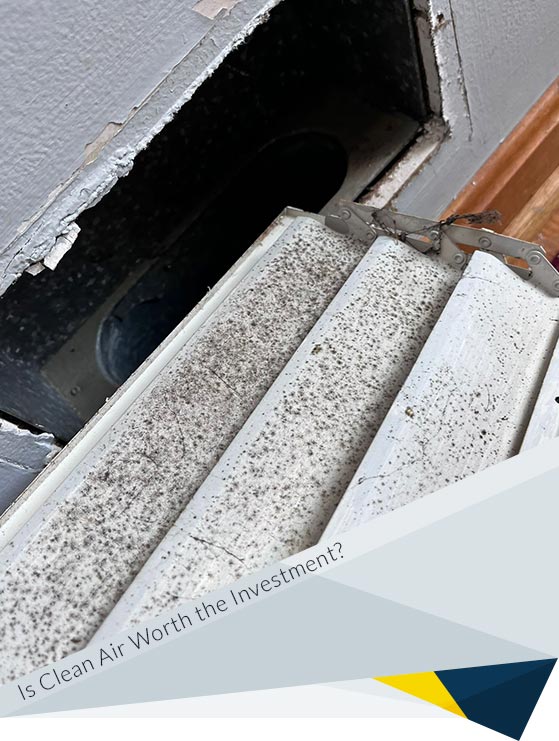
Indoor air quality plays a critical role in maintaining a healthy living environment, yet many homeowners overlook one of the most common sources of contamination: mold in air ducts. When mold spores settle and grow within HVAC (heating, ventilation, and air conditioning) systems, they can circulate throughout the entire home, affecting every breath you take. This is not just a matter of comfort, it's a matter of health and safety.
Mold inside air ducts is often invisible, but its impact can be far-reaching. Because HVAC systems are designed to move air throughout a building, they also become efficient vehicles for spreading airborne mold spores. What begins as a small, isolated growth can quickly affect the entire indoor environment without ever being seen.
Air ducts provide the perfect conditions for mold to grow: darkness, moisture, and organic particles that settle over time. When condensation forms inside the ductwork or when filters are clogged and airflow is restricted, mold spores can settle and multiply. These spores are then carried through the ventilation system and released into every room, often without any visible signs.
Breathing in mold-contaminated air can lead to a range of health issues, especially for people with asthma, allergies, or compromised immune systems. Even in healthy individuals, long-term exposure to mold spores and mycotoxins can cause persistent respiratory symptoms, fatigue, and skin irritation. The connection between indoor air quality and well-being is well established, yet mold in ductwork remains one of the most overlooked contributors.
When mold appears in air ducts, it's rarely an isolated issue. It often points to underlying problems such as poor ventilation, high indoor humidity, or HVAC systems that aren't properly maintained. These conditions not only support mold growth but can also reduce the efficiency of the system, increase energy consumption, and lead to costly repairs if left unaddressed.

The presence of mold in your air ducts isn't just a maintenance issue, it's a direct threat to your health. Because HVAC systems circulate air throughout your home or building, they also distribute whatever contaminants are present inside the ductwork. When mold is part of that equation, the consequences can be more serious than many people realize.
One of the most common signs of mold exposure is a persistent irritation of the respiratory system. People may experience coughing, sneezing, wheezing, or shortness of breath, especially when the HVAC system is running. These symptoms often mimic seasonal allergies or mild colds, which is why mold-related illness can go undiagnosed for long periods. For individuals with asthma or chronic respiratory conditions, exposure to mold spores can trigger more severe reactions and lead to frequent flare-ups.
Mold spores are known allergens. When they become airborne and circulate through your living space, they can cause skin rashes, itchy or watery eyes, nasal congestion, and sinus pressure. These symptoms tend to worsen indoors and may improve when you leave the affected environment, which is often a key indicator that the source is inside the home, often within the ductwork.
Long-term exposure to mold can also affect the immune system. In people with compromised immunity, such as the elderly, infants, or those undergoing medical treatments, mold exposure can increase vulnerability to infections and slow recovery from illness. Even in healthy individuals, chronic exposure to mold toxins may lead to fatigue, headaches, and a general decline in well-being.
Mold in air ducts often goes unnoticed until it begins to affect your health or comfort. Because the ductwork is hidden behind walls and ceilings, visible signs are rare in the early stages. However, there are several indicators that can help you recognize when mold may be present in your HVAC system.
One of the most common early signs of mold in ductwork is a persistent musty smell that intensifies when the air conditioning or heating is running. This odor is often strongest near vents and registers, and it doesn't go away with regular cleaning or air fresheners. If the smell returns consistently, especially after the HVAC system cycles on, it may be a sign that mold is growing somewhere inside the ducts.
If you or others in your household experience allergy-like symptoms that seem to worsen indoors, such as sneezing, coughing, nasal congestion, or itchy eyes, it could be due to mold spores circulating through the air. These symptoms often improve when you leave the building and return once you're back inside, which is a strong clue that the source is environmental and possibly linked to your HVAC system.
In some cases, mold may become visible around the edges of air vents or on nearby walls and ceilings. This usually indicates that the contamination has spread beyond the interior of the ducts. While not all mold is immediately dangerous, any visible growth near your ventilation system should be taken seriously and professionally assessed.
When mold is found in your air ducts, it's tempting to treat it like a routine cleaning issue. But mold remediation is a specialized process that requires more than just scrubbing or spraying. It involves identifying the source, containing the contamination, and ensuring that spores are not redistributed throughout your home.
Mold in HVAC systems often points to deeper issues like excess moisture, poor airflow, or hidden leaks. Professionals are trained to recognize these patterns and address them directly. Rather than simply removing visible mold, they investigate how and why it developed, which is essential for preventing it from returning.
Certified remediation teams use equipment designed specifically for mold containment and removal. HEPA filtration, negative air pressure systems, and antimicrobial treatments are standard tools in the process. These methods help ensure that mold spores are safely removed without spreading to other parts of the home.
Choosing a qualified team like FDP Mold Remediation means the job is done with precision and care. Our approach is built around safety, for both your property and your health. From initial inspection to post-remediation testing, every step is handled with attention to detail and compliance with industry standards.
When indoor air quality is compromised, experience matters. That's why so many homeowners trust FDP Mold Remediation to restore clean, breathable air and peace of mind.
While the terms air duct cleaning and air duct mold removal are often used interchangeably, they refer to very different processes. Understanding the distinction is essential when deciding how to address indoor air quality concerns, especially when mold is involved.
Standard air duct cleaning is designed to remove dust, pet dander, and other debris that naturally accumulate in HVAC systems over time. It's a maintenance task, often performed as part of routine home care, and it can help improve airflow and reduce allergens. However, it does not address biological contaminants like mold or bacteria, nor does it involve the use of antimicrobial treatments or containment procedures.
Air duct mold removal is a specialized form of remediation. It involves identifying mold colonies, isolating affected areas, and using professional-grade equipment to eliminate spores safely. This process often includes HEPA filtration, negative air pressure systems, and disinfectants designed to neutralize mold at the source. It also requires a deeper understanding of HVAC systems and the environmental conditions that allow mold to thrive.
Investing in mold removal from your air ducts is not just a matter of home maintenance, it's a decision that directly affects your health and indoor air quality. While the cost can vary, understanding what drives the price helps clarify why mold remediation is more involved than standard duct cleaning.
Air duct cleaning typically focuses on removing dust and debris from the system. It's a preventive service, and in many cases, it can be completed in a few hours. Mold removal, on the other hand, is a corrective process. It requires identifying the extent of contamination, isolating affected areas, and using specialized equipment to eliminate mold safely. This added complexity is reflected in the cost.
The total cost of air duct mold remediation depends on several variables. The size of the property, the severity of the mold growth, and the accessibility of the ductwork all play a role. In some cases, additional treatments such as fogging, HEPA air scrubbing, or dehumidification may be necessary to ensure the mold does not return. These steps are essential for long-term results but can increase the overall cost.
When you hire a professional team like FDP Mold Remediation, you're not just paying for labor, you're paying for expertise, safety, and peace of mind. Our process includes inspection, containment, removal, and post-treatment verification. It's a comprehensive approach designed to restore clean air and prevent future contamination.
Once mold has been removed from your air ducts, the next step is just as important: keeping it from coming back. Mold prevention isn't about a single fix, it's about creating conditions that make it difficult for mold to grow in the first place. With the right habits and a few strategic upgrades, you can significantly reduce the risk of future contamination.
Mold needs moisture to grow, and air ducts can become humid environments if not properly maintained. Condensation often forms when warm air meets cool surfaces inside the system. To prevent this, it's important to keep humidity levels in check throughout your home. Using a dehumidifier in damp areas, especially basements or crawl spaces, can make a noticeable difference.
Routine HVAC maintenance is one of the most effective ways to prevent mold in ductwork. This includes changing filters on schedule, inspecting for leaks or blockages, and ensuring that the system is properly balanced for airflow. A well-maintained system not only runs more efficiently but also reduces the likelihood of moisture buildup and stagnant air, two key contributors to mold growth.
Poor ventilation can trap moisture and allow mold to flourish. Areas like bathrooms, kitchens, and laundry rooms should be equipped with exhaust fans that vent to the outside. In homes with tightly sealed windows and doors, mechanical ventilation systems may be necessary to ensure fresh air circulation and reduce indoor humidity.
Musty odors, visible mold near vents, or unexplained allergy symptoms should never be ignored. Early intervention can prevent a minor issue from becoming a widespread problem. If you suspect mold is returning, a professional inspection can confirm whether remediation is needed or if preventive measures are holding up.
When mold is discovered in your air ducts, choosing the right remediation partner can make all the difference. You need a team that not only understands how mold behaves in HVAC systems but also knows how to eliminate it safely and prevent it from coming back. That's where FDP Mold Remediation stands out.
With a reputation built on trust and results, FDP Mold Remediation offers more than just technical expertise - we deliver peace of mind. Our approach is thorough, our methods are proven, and our commitment to customer care is evident in every project we take on.
From the first inspection to the final air quality check, we bring clarity, confidence, and clean air back into your space.
If you've noticed signs of mold in your air ducts, or simply want peace of mind about the air you breathe, now is the time to act. A professional assessment can uncover hidden issues before they become serious problems. With the right team, the path to a safer, healthier home is straightforward and stress-free.
Contact us today to schedule your inspection and take control of your indoor air quality.
Common signs include a persistent musty odor when the HVAC system is running, visible mold near vents, and allergy-like symptoms that worsen indoors. If you suspect mold but can't see it, a professional inspection can confirm its presence.
No. Standard duct cleaning removes dust and debris but does not eliminate mold or prevent it from returning. Mold remediation involves specialized equipment and techniques to safely remove spores and treat affected areas.
In most cases, yes, but it depends on the severity and location of the contamination. Your remediation team will advise you based on the scope of the work and any health risks involved.
The timeline varies depending on the size of the property and the extent of the mold growth. Most residential projects can be completed within one to three days, including inspection, treatment, and post-remediation testing.
Not if the underlying causes are addressed. Professional remediation includes identifying and correcting the conditions that allowed mold to grow, such as excess moisture or poor ventilation, to help prevent recurrence.



